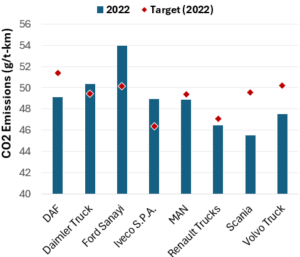Regulations
Summary of Oct 2023 CARB workshop for Tier 5 non-road standards
In a workshop held on Oct 30th – 31st, 2023, California’s Air Resourced Board (CARB) discussed proposed changes to the tailpipe emission standards for non-road machinery (construction, agricultural, gen-sets, etc.). Here is a summary of some of the key elements of the proposed changes.
Note: This was a workshop to discuss changes and get stakeholder feedback, so this is not a final proposal and expect more changes to come.

Image generated using AI (Canva)
Standards (latest workshop, not final proposal)
Sign up here to receive such summaries and a monthly newsletter highlighting the latest developments in transport decarbonization
5-Min Monthly
Sign-up to receive newsletter via email
Thank you!
You have successfully joined our subscriber list.
Recent Posts

IRENA Renewable Energy Capacity Statistics 2025
![]()
According to the latest report from IRENA, 2024 saw the largest increase in renewable capacity, accounting for 92.5% of overall power additions.

CO2 Emissions Performance of Heavy-Duty Vehicles in Europe – 2022 Results
![]()
The European Commission has published the official 2022 CO2 emission results for heavy-duty vehicles. Many OEMs are ahead of the targets and have gained credits, while others have their work cut out as we approach the 2025 target.
A summary of the SAE 2025 OBD Conference held in Porto, Portugal
![]()
A summary of the SAE 2025 OBD Conference held in Porto, Portugal, provided by MAHLE Powertrain.

